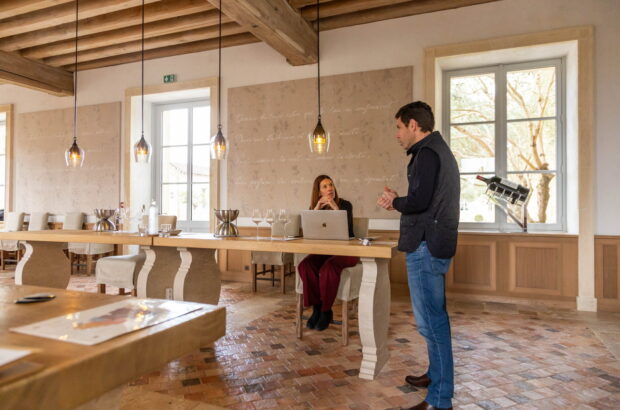Many wine styles can seem perplexing at first: imagine the first bottle of Barolo if you only know Barossa Shiraz, or the first bottle of Jura Savagnin if you were brought up on California Chardonnay. With time, thought and repeated tasting, though, comes understanding. You learn each wine’s syntax and lexicon, its hints and inferences. You grasp the ways in which each style communicates. Its beauty dawns, then grows.
Rosé wine sales grew 23% worldwide between 2002 and 2019. Its fuel has come from Provence, whose rosé exports soared by more than 500% over the 15 years to 2020. Spurred by the success of these Côtes de Provence new classics, petal-pink and quietly beguiling, everyone wants in on the act. This includes historical, indigenous styles of rosé, whose recognition and renown have been shaded out by the pale pink dazzle.
There is, though, a problem. We haven’t learned the language of rosé. It’s a wine most of us drink with our eyes: tinted allure. That’s not enough. It’s like saying you love the sound of Italian, but not bothering with the vocabulary and grammar. Rosé, for the time being, is a pretty babble.
This came to mind as I tasted a range of wines from the newly founded Rosés de Terroirs group, linking producers from Bandol and Bardolino, Sancerre and Tavel, Rosé des Riceys and Faugères. Doubtless more will join: Rioja? Marsannay? Palette? I love tasting rosé, as it’s a difficult challenge; the grammar is indeed novel. How do you read success and failure? How might excellence be articulated across a range of styles?
One guiding principle: there must be charm. Seduction (via colour, scent and flavour) is more important for rosé than for any other wine. Any rosé that is powerful, grand or serious but fundamentally charmless is unlikely to convince.
After that, though, I’d suggest that there are three main routes by which a pink wine can exert its charm: creaminess, crispness or character. Côtes de Provence’s pale-hued rosés are creamy, by dint of delicacy of fruit, restrained and understated acidity, the use of lees and the use of up to 20% of co-fermented white grapes, especially Rolle (Vermentino). Technology is vital, too: optimal harvesting to keep freshness in the fruit; direct pressing timed to the second; inert gases to keep oxygen at bay until the wine splashes into the glass. Drinkability (one glass leads to four) is its great virtue.
Away from Côtes de Provence (and notably in Languedoc, as well as all points north), crispness increasingly serves as the structuring principle. This means more acidity than is typical for Provence – which is dangerous, since misjudged acidity, once allowed to eclipse delicate fruit, will instantly extirpate charm, too. Get crispness right, though, and it will provide a more mouthwatering rosé experience than you’ll ever find in Provence. Cue the best Bardolino and Faugères.
Character is the quality most difficult to define – but it’s what great gastronomic rosé wines have, and it’s what the Rosés de Terroirs group most wants to champion. Tavel’s vivid fruit presences and hibiscus hue (the result not of direct pressing but of up to two days’ cold maceration, plus some retained press wine for final adjustment) are one route. Bandol’s Mourvèdre and clay-rich marls give a salmon rosé which succeeds in being flavoury, resonant and commanding without ever jeopardising charm; while other approaches (like the extraordinary Clos Cibonne, with its emphasis on the Tibouren grape and long ageing on lees and under a film of yeast – a distant Provençale cousin of the aged Rioja rosé tradition) build structure, layers and mellowness into the wine. The charm, now, is akin to that of the historical novel: a journey back to the delicacies of times past.
To appreciate all of this, you need just two things: an open mind, and a palate prepared to listen for nuance. Nothing should be loud in rosé, even when it’s characterful. This is a language best murmured.
In my glass this month
I loved the Tavels in this tasting: great wines produced by Maby, Prieuré de Montézargues, Trinquevedel – and this, the Château d’Aqueria, Tavel 2001, blended from Grenache, Syrah and white Clairette. Translucent cherry; then bell-clear fruit on the nose, thrusting and vital. That’s what you’ll find on the palate, too, in pure, singing style, with ample vinous length. It’s a prefect among rosés, the grown-up in the room; it’s the ridge path which separates the valley of pink from the valley of red.













